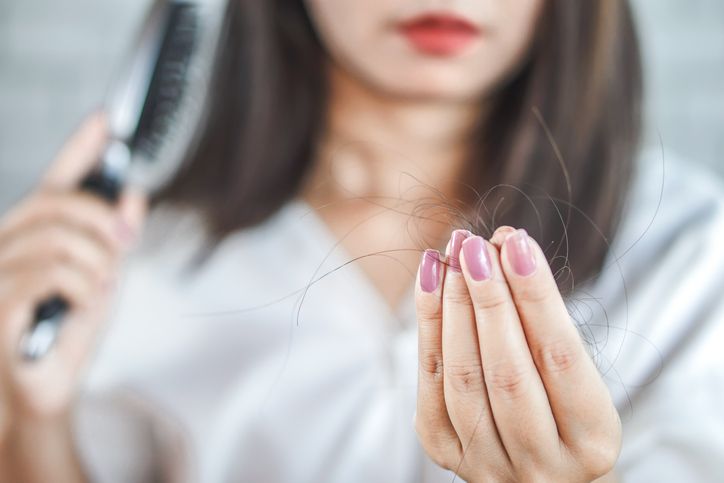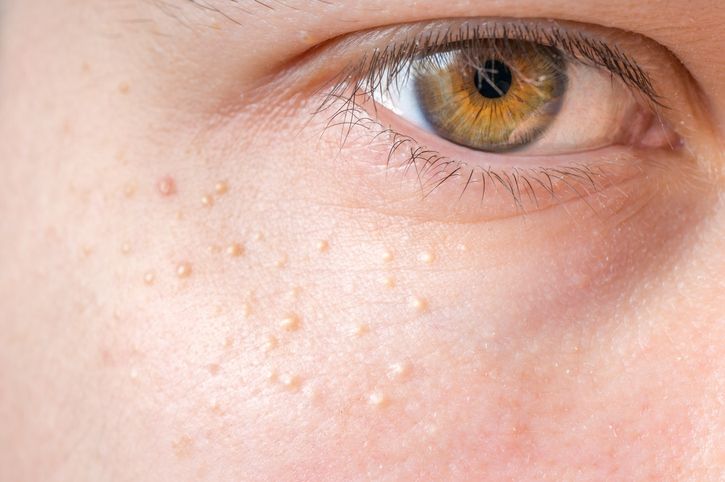- Home
- Trend
- Weight Loss Strategies
- Acne Tips
- Hair Health Information
- Blemish Removal Tips
- Acne Scar Removal Tips
- Muscle Building Techniques
- Intimate Care Tips
- Postpartum Intimate Care
- Eye Bags Wiki
- Tips for Face Slimming
- Secret of Permanent Hair Removal
- Breast Enlargement Tips
- Cure to Snoring
- Marionette Lines
- Skin-Tightening Secrets

免費體驗
F8 Hair Regrowth Treatment
1 Minute Self-Registration
Date should not be before minimal date
Hair is an integral part of our identity and self-expression, making hair loss a concern for many individuals. Whether it's gradual thinning, sudden shedding, or specific patterns like a receding hairline, understanding the reasons behind hair loss is crucial for effective management and potential regrowth. In this article, we will explore various aspects of hair loss, from its causes to potential treatments.
1
Hair Growth Slows Down? Pay Attention to See If You Have These Symptoms

Increased Hair Shedding
Thinning Hair
Receding Hairline or Widening Part
Increased Visibility of the Scalp
Changes in Texture and Quality
Persistent Dryness or Brittle Hair
Scalp Conditions
Slower Response to Styling Treatments
2
The Top 5 Reasons Behind Sudden Hair Loss

1. Genetic Factors
2. Medical Conditions
3. Environmental and Lifestyle Factors
4. Hormonal Changes
5. Hair Care Practices
- Scalp Eczema: What Are The Symptoms And Treatments? Editor Tried A Laser Therapy For Relief
- How To Choose The Right Hair Growth Products For Yourself? What Are Hair Growth Medications?
- Combat Hair Loss Effortlessly: Everything you have to know about Hair Transplant
- The Key To Hair Growth: 9 Nutrients That Benefit Hair + 10+ Daily Tips To Accelerate Growth
3
What Can Happen If You Lose Hair But Decided to Let It Be?

1. Progressive Hair Thinning
2. Visible Bald Patches
3. Negative Impact on Self-Esteem
4. Compromised Hair and Scalp Health
5. Permanent Hair Loss
6. Unidentified Health Issues
7. Reduced Treatment Effectiveness
8. Continued Discomfort and Itching
4
Want To Stop Losing Hair? Battle Your Hair Fall Reasons And Regain Normal Hair Growth

1. Topical Treatments
2. Medical Interventions
3. F8 Hair Regrowth Treatment
4. Hair Transplant

免費體驗
F8 Hair Regrowth Treatment
1 Minute Self-Registration
Date should not be before minimal date
5
Concluding Thoughts


免費體驗
F8 Hair Regrowth Treatment
1 Minute Self-Registration
Date should not be before minimal date
FAQ

1. What is androgenic alopecia, and how does it contribute to hair loss? Are there effective treatments available for managing this condition?
Androgenic alopecia, commonly known as male or female pattern baldness, is a hereditary condition causing hair thinning and loss. It results from genetic factors and hormonal influences. Treatments include medications like minoxidil and finasteride, as well as hair transplant surgery.
2. Can cancer treatment lead to noticeable hair loss, and are there ways to mitigate or manage this side effect?
Yes, certain cancer treatments, especially chemotherapy, can lead to noticeable hair loss. To manage this side effect, individuals can consider wearing wigs, scarves, or hats, or explore cooling caps to minimise hair loss during treatment.
3. How does overall hair thinning contribute to the perception of noticeable hair loss, and what steps can individuals take to stimulate hair growth?
Overall hair thinning can create the illusion of noticeable hair loss. Managing and improving hair density involve using topical treatments, adopting a nutrient-rich diet, and exploring medical interventions such as hair regrowth treatments.
4. What factors influence the growth of new hair, and how can these factors positively or negatively affect the process?
The growth of new hair is influenced by factors like genetics, hormonal balance, and overall health. Positive influences include a balanced diet and proper hair care, while negative factors may include stress, hormonal imbalances, and certain medical conditions.
5. Can changes in pubic hair growth indicate underlying issues affecting hair elsewhere on the body, and what measures can be taken to address these concerns?
Changes in pubic hair growth may signal broader issues with hair health. To address concerns, individuals should consult a healthcare professional to identify and treat any underlying conditions, and consider adopting a healthy lifestyle, including a balanced diet and stress management.









